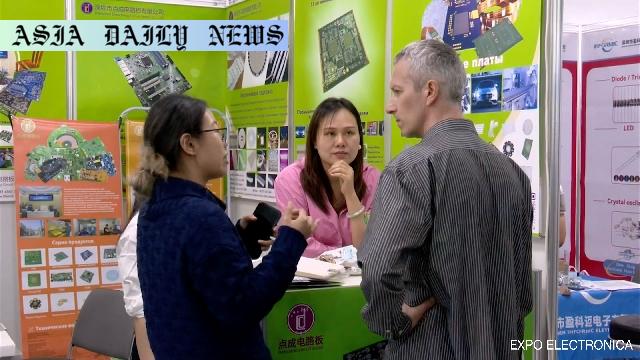China-Russia Electronics: Hundreds of Chinese companies flock to expand business in Russia amid increased demand for components.

The Rise of China-Russia Electronics Trade
In recent years, geopolitical shifts have sparked new collaborations and trade opportunities between nations, with the China-Russia electronics trade becoming a significant example. A prominent electronics exhibition held in Moscow recently saw over 800 firms participate, of which approximately half were Chinese. This surge reflects China’s proactive stance in filling the void left by Western countries, which have imposed restrictions on semiconductor and electronic exports to Russia following the Ukraine invasion.
This development is pivotal for both nations. Russia’s electronics industry critically depends on imports, and Chinese companies, seizing the opportunity, are steadily expanding their footprint in the Russian market. A sales representative from Shenzhen noted that Russia’s sudden market gap opened doors for fierce competition among Chinese manufacturers seeking to capture market share. Furthermore, the president of a Russian affiliate of a Chinese company observed that many electronic components now originate in China, some of which are redirected to Russia even if initially acquired locally for Chinese markets.
Economic and Strategic Implications
The increased trade between China and Russia has multifaceted implications. Economically, China benefits from accessing a burgeoning Russian market with a growing appetite for electronic components. Demand for these components has reportedly increased by over 30% in the past year or two. For Russia, Chinese electronics help fill its technological needs despite international sanctions, making this collaboration a strategic necessity for its domestic industries.
Politically, this partnership underscores a shift away from global reliance on Western nations. It reflects China’s ambitions to bolster its dominance in key sectors like technology while fostering better relationships with countries like Russia, enhancing their mutual economic and strategic interests.
Looking Ahead: A Sustained Collaboration
Both nations’ reliance on this partnership seems unlikely to wane anytime soon. An observer from the event aptly summarized that Russia’s electronics industry depends heavily on Chinese components, and this reliance predicts sustained cooperation. As the West tightens sanctions, China has positioned itself as an indispensable player in Russia’s forthcoming electronics advancements.
However, this growing collaboration also faces challenges. From maintaining the innovation pipeline to circumventing international criticisms and sanctions, both nations will need to strategically align their policies to ensure long-term success. As such, the China-Russia electronics trade could serve as both a case study and a reflection of the new world order in the making.
Commentary
Understanding the Impacts of the China-Russia Electronics Trade
The increasing cooperation between China and Russia in the field of electronics is a fascinating development, rooted in necessity and opportunity. With Western sanctions severely limiting Russia’s access to cutting-edge semiconductors and components, China’s quick response signifies more than just economic benefits; it highlights a shifting geopolitical dynamic. As economic realignments take shape globally, this evolving collaboration deserves a thorough exploration.
From China’s perspective, the move to dominate Russia’s electronics market is highly strategic. Faced with intense competition domestically, expanding to a market that was previously reliant on Western technologies offers both financial opportunities and diplomatic influence. As major global powers scrutinize these trades, China’s ability to navigate sanctions and international discourse while catering to Russia’s surging demands showcases its adaptability and growing clout in international trade.
Implications for the Global Electronics Industry
For Russia, the reliance on Chinese components is not without risks. Dependency on a single supplier might lead to vulnerabilities in the long run, especially if political or economic disruptions arise. Moreover, the re-routing of Western-designed components manufactured in China to Russia poses ethical and legal questions. If proven, such practices might elicit stronger enforcement of sanctions, further complicating an already delicate trade scenario.
This collaboration also impacts other players in the semiconductor and electronics industries. Countries espousing stricter regulations on technology sharing and anti-counterfeit practices may face increased pressures to prevent bypassing of trade restrictions. Meanwhile, other nations observing these developments might explore similar bilateral arrangements to navigate geopolitical uncertainties.
Ultimately, the China-Russia electronics trade exemplifies a deeper trend of nations recalibrating their trade relationships in response to a changing global landscape. While it delivers short-term solutions, its long-term consequences, both politically and economically, will continue to shape regional and global strategies. This partnership warrants continued attention as it unfolds further.


